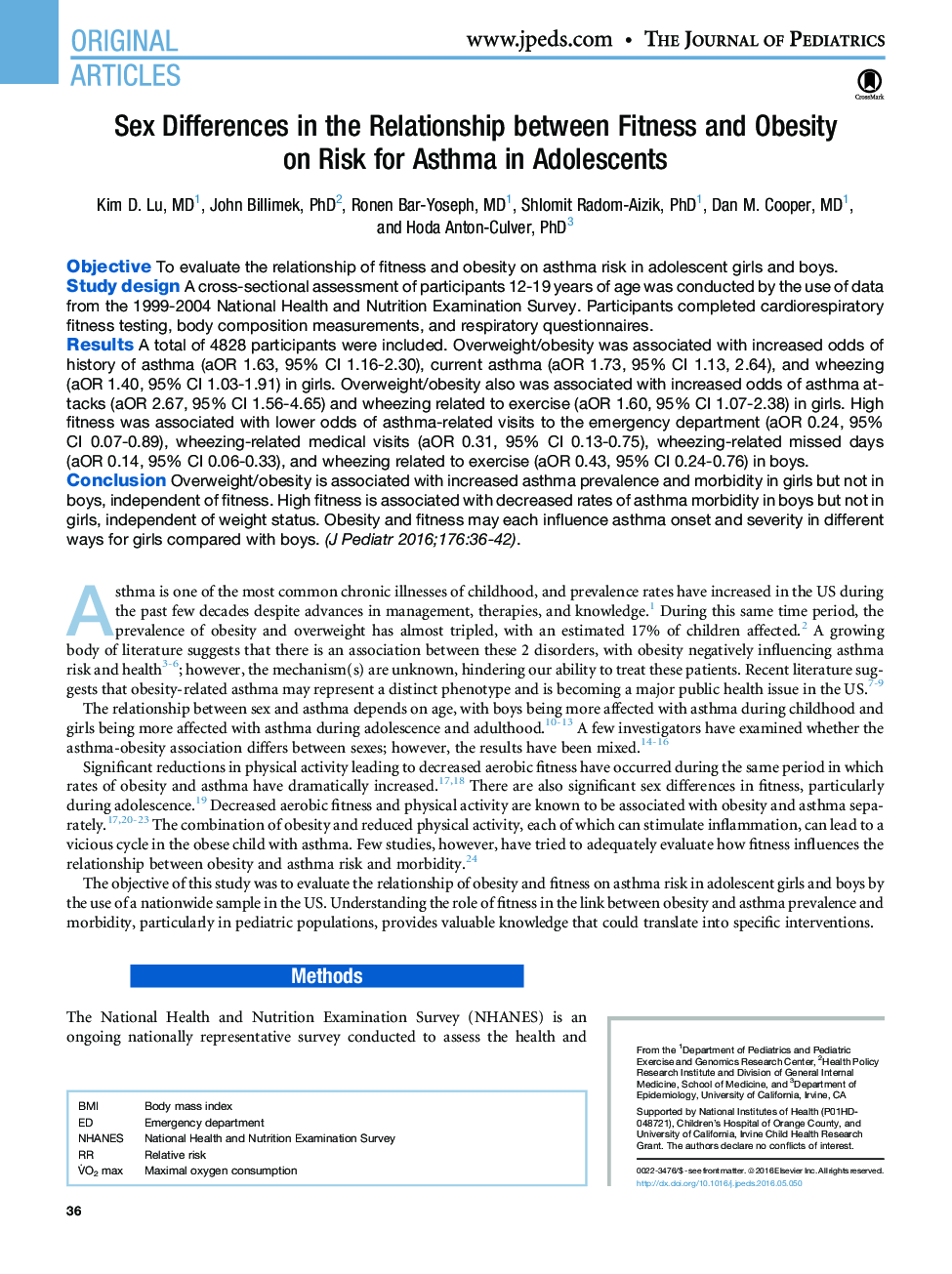| Article ID | Journal | Published Year | Pages | File Type |
|---|---|---|---|---|
| 4164383 | The Journal of Pediatrics | 2016 | 7 Pages |
ObjectiveTo evaluate the relationship of fitness and obesity on asthma risk in adolescent girls and boys.Study designA cross-sectional assessment of participants 12-19 years of age was conducted by the use of data from the 1999-2004 National Health and Nutrition Examination Survey. Participants completed cardiorespiratory fitness testing, body composition measurements, and respiratory questionnaires.ResultsA total of 4828 participants were included. Overweight/obesity was associated with increased odds of history of asthma (aOR 1.63, 95% CI 1.16-2.30), current asthma (aOR 1.73, 95% CI 1.13, 2.64), and wheezing (aOR 1.40, 95% CI 1.03-1.91) in girls. Overweight/obesity also was associated with increased odds of asthma attacks (aOR 2.67, 95% CI 1.56-4.65) and wheezing related to exercise (aOR 1.60, 95% CI 1.07-2.38) in girls. High fitness was associated with lower odds of asthma-related visits to the emergency department (aOR 0.24, 95% CI 0.07-0.89), wheezing-related medical visits (aOR 0.31, 95% CI 0.13-0.75), wheezing-related missed days (aOR 0.14, 95% CI 0.06-0.33), and wheezing related to exercise (aOR 0.43, 95% CI 0.24-0.76) in boys.ConclusionOverweight/obesity is associated with increased asthma prevalence and morbidity in girls but not in boys, independent of fitness. High fitness is associated with decreased rates of asthma morbidity in boys but not in girls, independent of weight status. Obesity and fitness may each influence asthma onset and severity in different ways for girls compared with boys.
